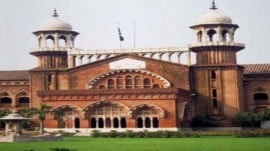
Talking to The Express Tribune, Ahmed warned that “the livelihoods of urban poor and low-wage earners are subjected to the highest level of risk given the persistent inflation and falling purchasing power.”
He highlighted the role of microfinance institutions in poverty alleviation but stressed that other factors are limiting the success of support activities. “The energy crisis is stifling small family-owned businesses and the overall security situation has severe consequences for small businesses as well as the overall economy,” he said.
PMN is a network of organisations engaged in microfinance and dedicated to improving the outreach and sustainability of microfinance in Pakistan.
The microfinance sector in the country witnessed impressive growth between 2003 and 2007 as the number of borrowers grew to 1.8 million. However, political turmoil and economic recession have taken a bite of growth over the past two years. Statistics show that there are currently two million active borrowers.
“We witnessed a decent growth of about five per cent in the first half of 2010 but unfortunately after the floods growth levelled off,” Ahmed added.
Explaining the factors behind the limited success of the microfinance sector, he stressed that “liquidity issues of the industry need to be addressed on an urgent basis.” Ahmed highlighted that government borrowing from banks has sidelined the private sector and high interest rates have made the cost of borrowing exorbitant, emphasising the need for more donors to shore up guarantees to back the microfinance sector as well as more funding for support institutions like Pakistan Poverty Alleviation Fund.”
“Targeted subsidies are difficult to implement but they are much better than blanket subsidies like those on electricity and petrol,” he said citing the Benazir Income Support Programme as a commendable initiative from the government.
Tie-ups with telecom companies
Ahmed also spoke about the possibility of partnerships between telecom service providers and microfinance institutions, highlighting the importance of the telecom sector which has 90 million active subscribers. “Telenor Pakistan has partnered with Tameer Microfinance Bank and introduced Easy Paisa scheme while the United Bank Limited is currently working on its Omni project. TCS courier service and Orascom – the parent company of Mobilink - have also applied to the State Bank of Pakistan for microfinance bank licences,” said the PMN president.
He believes that synergies between telecom service providers and microfinance institutions are viable, but added that “the success of branchless banking mandates sharing platforms, just like the success of ATMs (automated teller machines) resulted from linkages between various institutions.”
Market potential
“There are around 30 million borrowers in Bangladesh and as many as 60 million in India – all facilitated through microfinance institutions,” he said, pointing to the potential of the market in Pakistan. He also mentioned that in India, commercial banks are mandated to allocate 40 per cent of their loans to prioritised sectors including microfinance.
On the other hand, the average loan size of the industry in Pakistan has dropped in recent years. Research conducted by PMN shows that many borrowers are now tapping multiple institutions for similar loans. Additionally, many people are using these loans to purchase basic necessities like food instead of investing them in enterprising activities.
Non-payment of loans has also been a recurring problem in the sector, particularly in urban population. PMN has established a credit bureau which is currently in operation in Lahore, the most competitive market for the industry. “The credit bureau has a 60 per cent hit rate so far,” said Ahmed explaining that this is the proportion of people with multiple outstanding loans in addition to those with a history of non-payment.
Disbursement of loans to women has also remained unsatisfactory, but recent data shows that the gender divide in this area may be narrowing. “The industry has started to go into virgin markets and there are increasing partnerships and innovation which are very encouraging,” he added.
Despite challenges such as high costs of financing and lack of funding, the country’s microfinance sector has a vast potential market to cater to. Ahmed has expressed hope that liquidity issues and security concerns may be allayed so that the most vulnerable sections can improve their economic conditions.
Published in The Express Tribune, January 18th, 2011.












































COMMENTS (1)
Comments are moderated and generally will be posted if they are on-topic and not abusive.
For more information, please see our Comments FAQ